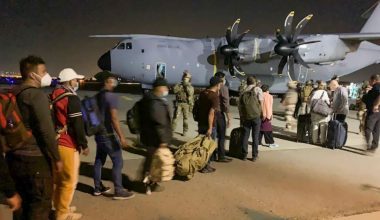Three crew members of Rimbun Air heading towards Intan Jaya district from Nabire, Indonesia, were killed in a crash in a steep forest near the Sugapa airport on September 15. The De Havilland Twin Otter PK-OTW carrying construction materials on board had taken off from Nabire regency at 6:40 am WIT but was lost in the thick later, disappearing from radar and crashed in Indonesia’s easternmost Papua province. The rescue team consisting of officers from search agency, Indonesia Military and national police found Rimbum Air DHC in the state of complete destruction at around 11:00 local time and confirmed the death of 3 crew members on board. The perished crew members include a pilot, a co-pilot, and a technician.
What actually happened?
According to the transportation ministry, the cargo flight lost contact with the air control in Sugapa about 50 minutes after take-off. The pilot’s cell phone was still active after the missing plane lost contact with ATC, though it was never answered, Sandi Sultan, Precinct chief of Intan Jaya, reported. The Twin Otter was found in pieces around 11: am by locals in Bilogai village at 2400m altitude.

The plane was just 3.5 km away from Sugapa’s Bilorai airport before the poor visibility due to thick mist caused the aircraft to hit the ground, completely destroying the aircraft. Witnesses at the airport nearby stated to have heard a loud noise and trees falling, which was the plane’s noise impacting the high ground. The chartered helicopter was deployed to search on dense forest above the airport. The rescue team located the plane’s wreckage at Wobu Mountain after an aerial search of Intan Jaya. One of the aircraft’s wings was lodged in trees, as shown in the video taken by Basarnas rescuers. The initial search team had hoped to find the crew members alive and evacuate them immediately, but the weather conditions and steep terrain obstructed the victim’s recovery. The evacuation process was further hindered due to the rainy and foggy weather at the crash scene. Soon, all three dead bodies were slated to be evacuated to Sugapa sub-district.
WorldALNews: RT @JacdecNew: Rimbun Air DHC-6 Twin Otter (PK-OTW, built 1976) crashed in Sugapa, Intan Jaya District, Papua, Indonesia with three crew on board. The cargo flight took off in Nabire and impacted high ground on approach to Bilogai AP (WABV).… pic.twitter.com/IdAhUTyKin
— Matthew Weed (@matthewweed2016) September 15, 2021
Aircraft’s condition following the crash
The airplane crash on the hill completely damaged the cockpit and largely impacted the tail section of the fuselage.
Also Read: Indonesian military aircraft crashed with thirteen people on board
The DHC-6-300 Twin Otter is a 45.3-year-old aircraft, first flown in June 1976. It was delivered to Rimbun Air in February 2021. The aircraft belonging to Beau Del Leasing Inc in Canada was initially delivered to the US Department of Energy in June 1976 and flown till October 2010. From 2011 to 2017, Air Labrador flew this aircraft. The twin otter also commenced flight operations for Trans Maldivian Airways for three years, i.e., from 2017-late 2020.
Rimbun Air
Rimbun Air, the subsidiary of PT Menara Grand Papua, stepped into the aviation industry in 2018 to meet the increasing demand for STOL aircraft in the Indonesian market. It operates the fleet of Boeing 737 freighter and DCH 6-400 Twin Otters to serve the most commute and rural areas across the archipelago. The aircraft DHC 6-300 was the oldest aircraft operated by Rimbun Air before it crashed in a deep and steep forest while performing a go-around in-dense fog.
The Bilogai-Sugapa airport is the main airport in Sugapa-Papua Island adjacent to Intan Jaya. It has a 1969 ft. long asphalt runway on the top of the mountain ridge. The airport lies at 7348 feet above the mean sea level.
Papua is a jungle-covered area and lacks substantial road networks, and heavily depends on air transportation. So, light aircraft crashes are intense in this area. Although Indonesia has enjoyed an aviation boom with many improvements in recent years, the plane safety record is still a concern in this vast archipelago nation. Since 1945, there have been more civilian airline passenger accidents in Indonesia than in any other nation in the region.
Indonesia’s vulnerability to plane safety record
Earlier this year, Boeing 737-500 crashed near Jakarta, killing 62 people on board as it plunged roughly 3000m, minutes after taking off from Soekarno Hatta International Airport. Now, this latest twin otter crash has once again turned the microscope on Indonesia’s aviation oversight and regulation.
Aviation experts agree that the Indonesian aviation industry has seen several improvements, frequent inspection, and rigorous oversight in recent years. The combination of economic, social, and geographical factors all seem to contribute to Indonesia’s civilian airliner accidents, marking it as the most dangerous place to fly in Asia.
Much work needs to be done to make Indonesian air regulations legitimately proud of their safety records. Otherwise, the explosive growth in Indonesian air travel won’t be fruitful at the expense of safety.






